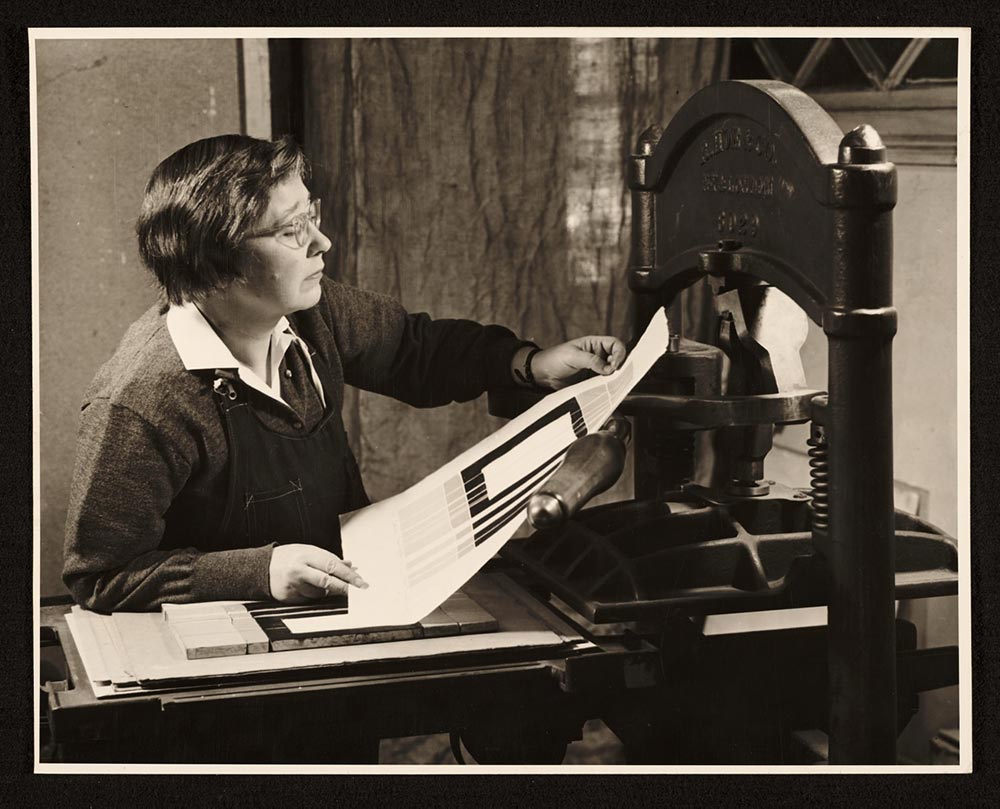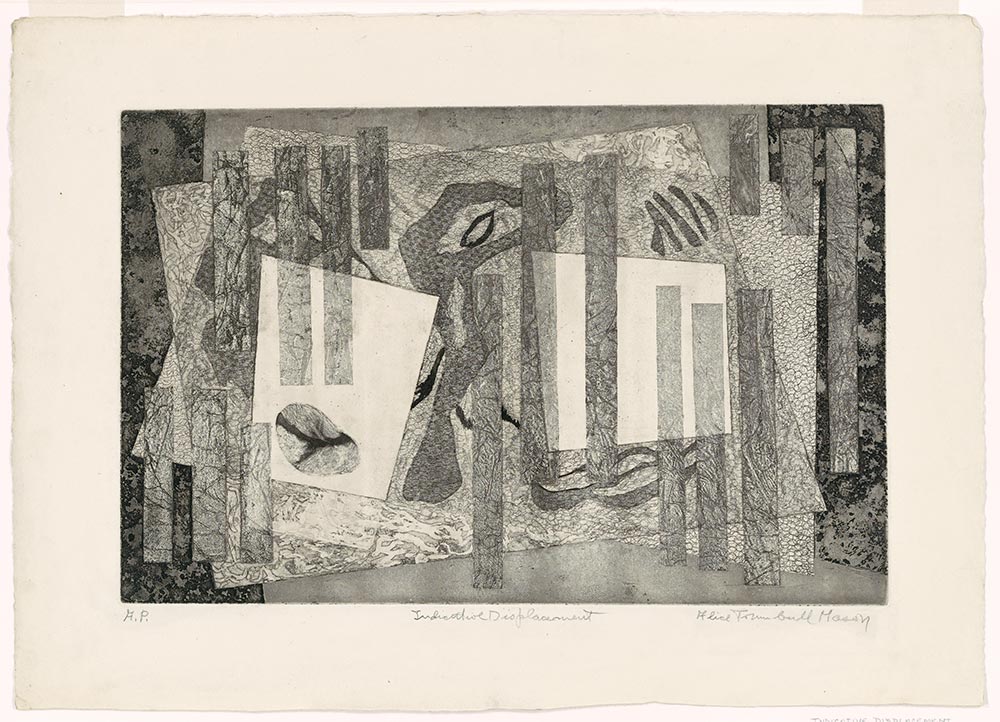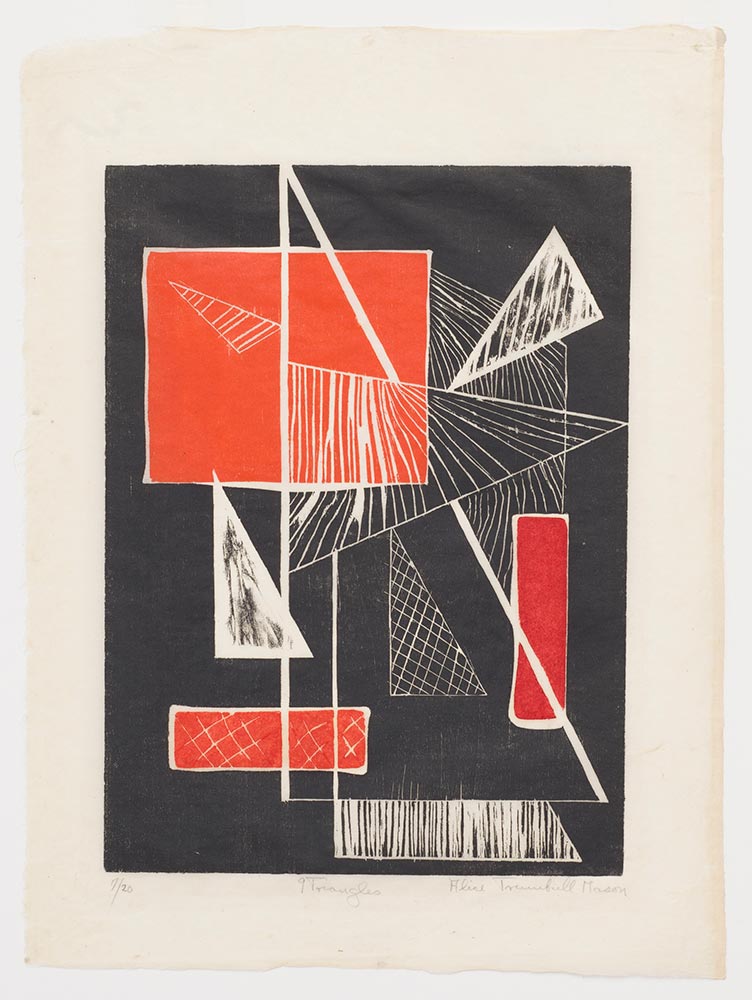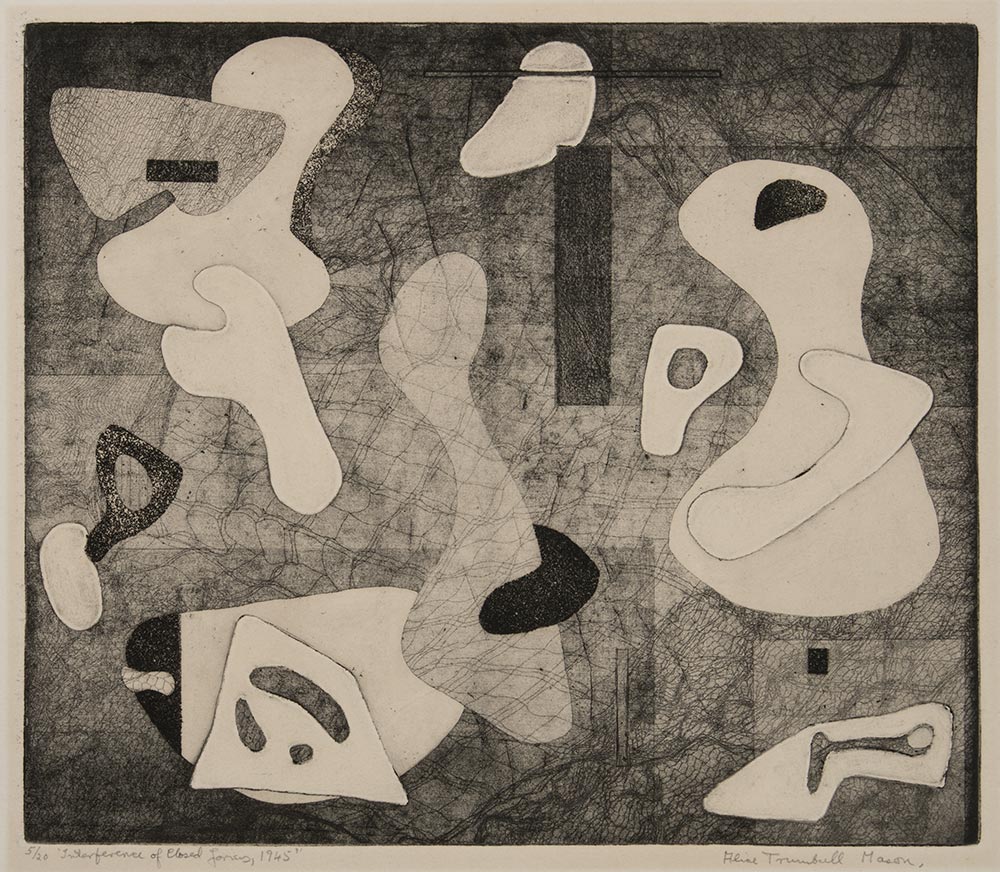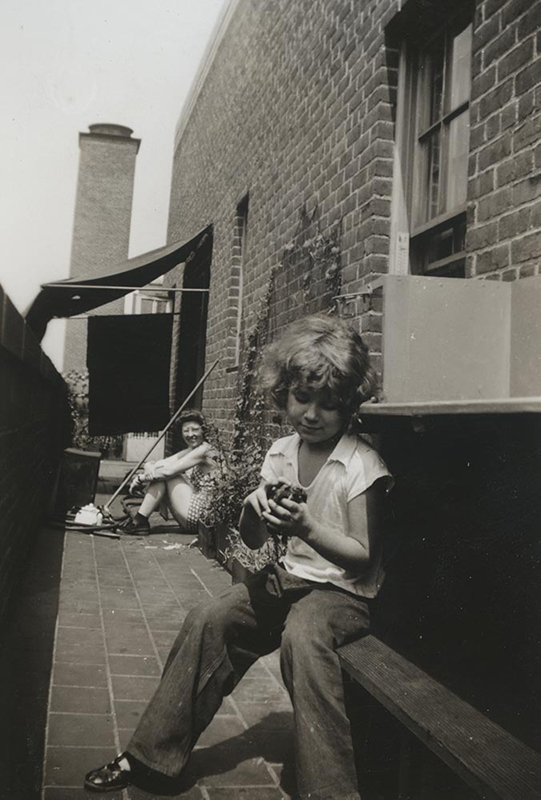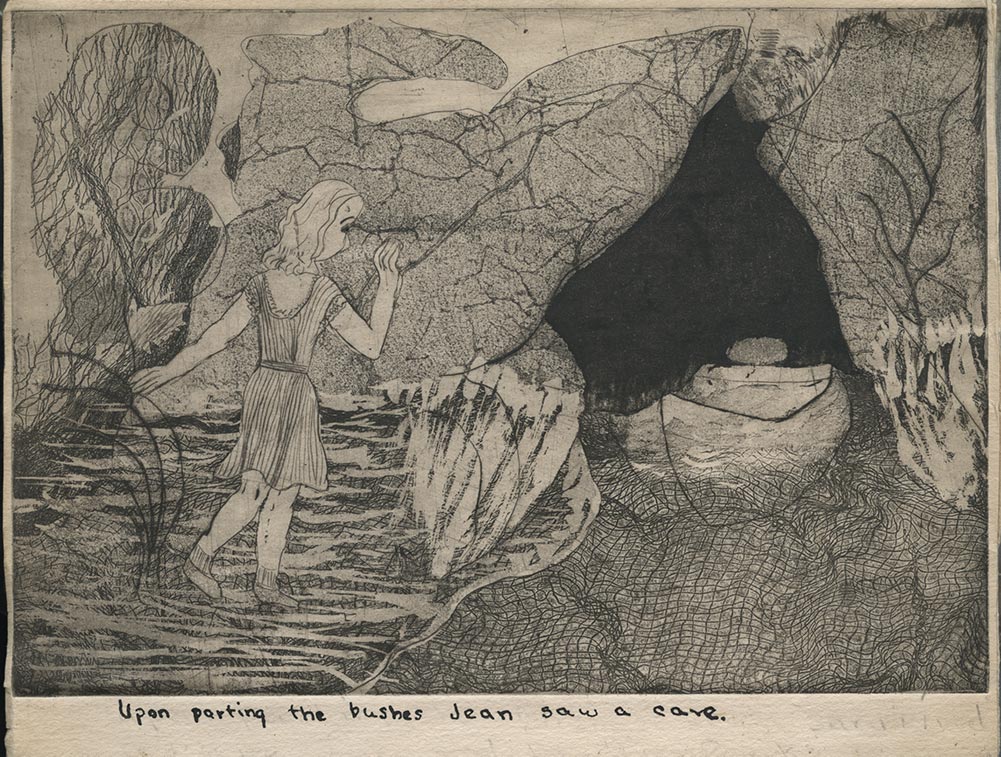58. Alice Trumbull Mason (and Emily Mason)
| Life Dates | 1904-1971 |
| Place of Birth | Litchfield, CT, USA |
| Place of Death | New York, NY, USA |
| Birth Name | Alice Trumbull |
Alice Trumbull Mason, born 1904 in Litchfield, Connecticut, enjoyed the distinct benefit of growing up in a creative family. Her mother Anne Train Trumbull (1865-1930) painted before having children, and her father was a descendant of John Trumbull (1756-1843), the great American history painter.1 Like her mother before her, Mason spent a significant time in Europe during her youth absorbing the cultural and artistic past. Her first exposure to artistic training occurred in the early 1920s, when Mason studied painting at the British Academy, learned the history of art, sketched local masterpieces and nearby landscapes, and wrote poetry.2 Between roughly 1924 and 1928, Mason enrolled in life class of the realist painter Charles W. Hawthorne (1872-1930) at the National Academy of Design. Hawthorne seems to have referred Mason to study with one of his former students, Arshile Gorky (1904-1948), who was then teaching at the Grand Central School of Art, and Mason learned through Gorky to incorporate synthetic cubism into her still lives as early as 1929.3 Her career slowed down in the early 1930s with her marriage to Warwood Mason and the births of two children in 1932 and 1933, but she remained active in the literary world corresponding with William Carlos Williams and Gertrude Stein. Mason restarted her painting career in 1935, becoming a founding member of the Associated Abstract Artists group and having solo shows at the Museum of Living Art (1942) and Rose Fried’s Pinacotheca (1948). Mason came to Atelier 17 once it had moved down to its Eight Street location, probably after meeting Hayter and other workshop members at one of the popular social hangouts in the Village.4 Her first etchings, produced in 1945, allowed her to develop further what she called her “architectural” abstraction by exploring techniques like pressing fabric and other textures into soft ground etching. Working at Atelier 17 also opened up many opportunities for Mason to expand her professional network and distribute nonobjective prints more widely than she could her paintings. She continued printing color woodcuts until a few years before her death in 1971. Mason’s commitment to geometric abstraction never flagged, and her color woodcuts further developed her experimentation with biomorphic shapes across textures, colors, and dimensional planes. Mason installed a press in her uptown studio, a long-term loan from fellow Atelier 17 member Letterio Calapai (1902–1993), which enabled her to print the woodcuts more efficiently.5 Painting remained important to Mason, but these woodcuts were instrumental to maintaining the circulation of her name within national and international exhibitions of American modernist printmaking.
Emily Mason (born 1932)
As a young teenager, Emily Mason occasionally tagged along with her mother, Alice Trumbull Mason, to visit the Atelier 17 studio. There, she created her first prints, several drypoint soft ground etchings made to illustrate Escape, a story she had penned.
Archives
Alice Trumbull Mason Papers, 1921–1977, Archives of American Art, Smithsonian Institution, Washington, D.C.
Alice Trumbull Mason Estate, New York, NY
Selected Bibliography
“Alice T. Mason, 67, Abstract Painter.” New York Times, July 2, 1971.
“Alice Trumbull Mason.” Art News 47 (March 1948): 47.
“Alice Trumbull Mason.” Arts Magazine 33 (May 1959): 57.
Ashton, Dore. “Alice Trumbull Mason.” Art Digest 27, no. 1 (October 1, 1952): 29.
Breuning, Margaret. “Non-Objective Paintings and Prints.” Art Digest 22 (March 15, 1948): 22.
Brown, Marilyn. Alice Trumbull Mason, Emily Mason: Two Generations of Abstract Painting. New York: Eaton House, 1982.
———. “Three Generations of Artists.” Woman’s Art Journal 4, no. 1 (Spring-Summer 1983): 1–8.
Devree, Howard. “A Reviewer’s Notebook.” New York Times, November 1, 1942.
Foote, Lona. “The True Realism: A History of Alice Trumbull Mason, Architectural Abstractionist, with a Look at Her Work Between 1938 and 1968.” M.A. thesis, City College of New York, 1982.
Gallatin, A. E. Alice Trumbull Mason. New York: Pinacotheca Gallery, 1948.
Glueck, Grace. “Alice in Mondrianland.” New York Times, June 3, 1973.
Guest, Barbara. “Alice Trumbull Mason.” Art News 51 (October 1952): 63.
Haas, Irvin. “The Print Collector: Abstractions.” Art News 45 (July 1946): 10.
Hughes, Robert. “Rediscovered: Women Painters.” Time 109, no. 2 (January 10, 1977): 60–63.
Johnson, Una. Alice Trumbull Mason: Etchings and Woodcuts. New York: Taplinger, 1985.
Kramer, Hilton. “Art: Alice Mason Abstracts.” New York Times, May 19, 1973.
Larsen, Susan C. “The American Abstract Artists: A Documentary History 1936-1941.” Archives of American Art Journal 14, no. 1 (January 1, 1974): 2–7.
Mason, Alice Trumbull. “Concerning Plastic Significance.” In American Abstract Artists 1938, VI. New York, 1938.
Pincus-Witten, Robert. Alice Trumbull Mason. New York: Whitney Museum of American Art, 1973.
Reese, Albert. “Alice Trumbull Mason.” In American Prize Prints of the 20th Century, 137. New York: American Artists Group, Inc., 1949.
Tillim, Sidney. “What Happened to Geometry? An Inquiry into Geometrical Painting in America.” Arts Magazine 33 (June 1959): 38–44.
Westfall, Stephen. “Alice Trumbull Mason: Home-Grown Abstraction.” Art in America 43, no. 10 (October 1985): 146–49.
Wurmfeld, Sanford. Three Generations of Abstract Painting: Alice Trumbull Mason, Emily Mason, Cecily Kahn. New York: The Bertha and Karl Leubsdorf Art Gallery, Hunter College, 2005.
Notes
- For a summary of Anne Leavenworth Train Trumbull’s life, see Marilyn Brown, “Three Generations of Artists,” Woman’s Art Journal 4, no. 1 (Spring-Summer 1983): 1–2. Emily Mason Kahn, Alice Trumbull Mason’s daughter, maintains extensive archives about her mother and the Trumbull family in her studio. ↩
- The return date of the family’s trip to Italy is often given as 1922, but ship manifests prove they returned March 20, 1923. See Mason’s sketchbooks from these early travels and particularly her “History of Art” notebook, Alice Trumbull Mason papers, Archives of American Art, Smithsonian Institution, reel 629:1068-1123. ↩
- Arshile Gorky apparently only attended one class with Hawthorne, who referred him to the Grand Central School of Art. See Michael R. Taylor, “Learning from ‘Papa Cézanne’: Arshile Gorky and the (Self-)Invention of Modern Art,” in Cézanne and Beyond (Philadelphia, PA and New Haven: Philadelphia Museum of Art; In Association with Yale University Press, 2009), 558, n. 21. Inside one of Mason’s sketchbooks from her time at the National Academy, there is an envelope addressed to her on the Grand Central School of Art’s stationery. The postmark is February 6, 1928 (Gorky taught there from 1925 until 1931). See sketchbook, circa 1925-28, Alice Trumbull Mason papers, Archives of American Art, Smithsonian Institution, reel 629:1287. ↩
- There is some discrepancy in scholarship about when Mason began working at Atelier 17. Marilyn Brown says that she began working there in 1944. But, Mason’s first prints were executed in 1945. Mason’s daughter confirmed her mother did not work at Atelier 17 at the New School, so she must have been in the first group to work at the new Eighth Street loft. See Brown, Two Generations, 15; Emily Mason Kahn, interview by author, February 6, 2013. ↩
- Calapai’s loaned press has often been described as an etching press, but it was a Washington-style hand press by Hoe and Company. The press is pictured in John D. Schiff’s 1954 photograph of Mason working on the press across from the title page of Una Johnson, Alice Trumbull Mason: Etchings and Woodcuts (New York: Taplinger, 1985), and also on 11. Emily Mason Kahn confirmed that the Schiff photo was taken in her mother’s uptown studio in an email to Christina Weyl, January 5, 2017. ↩
